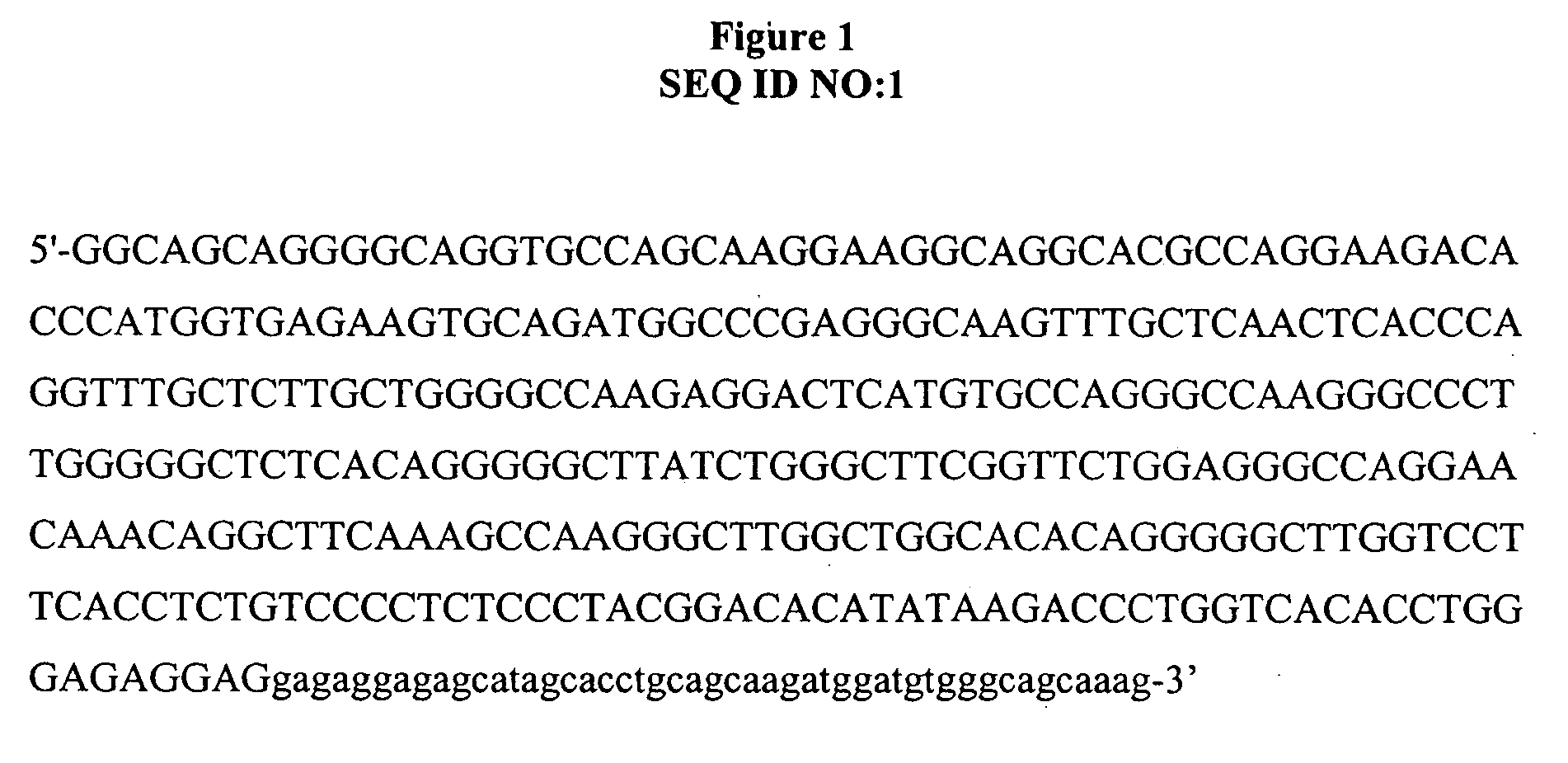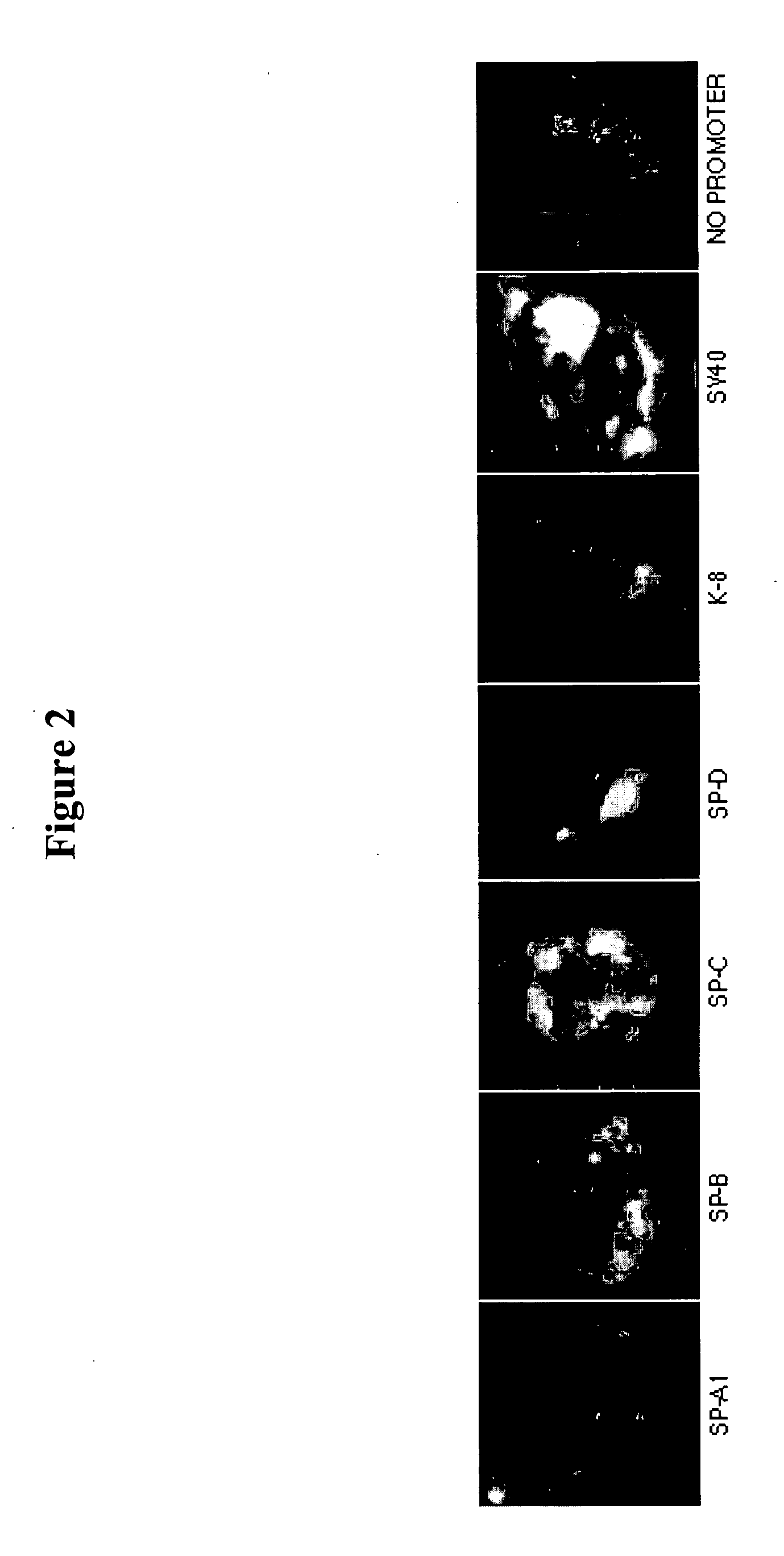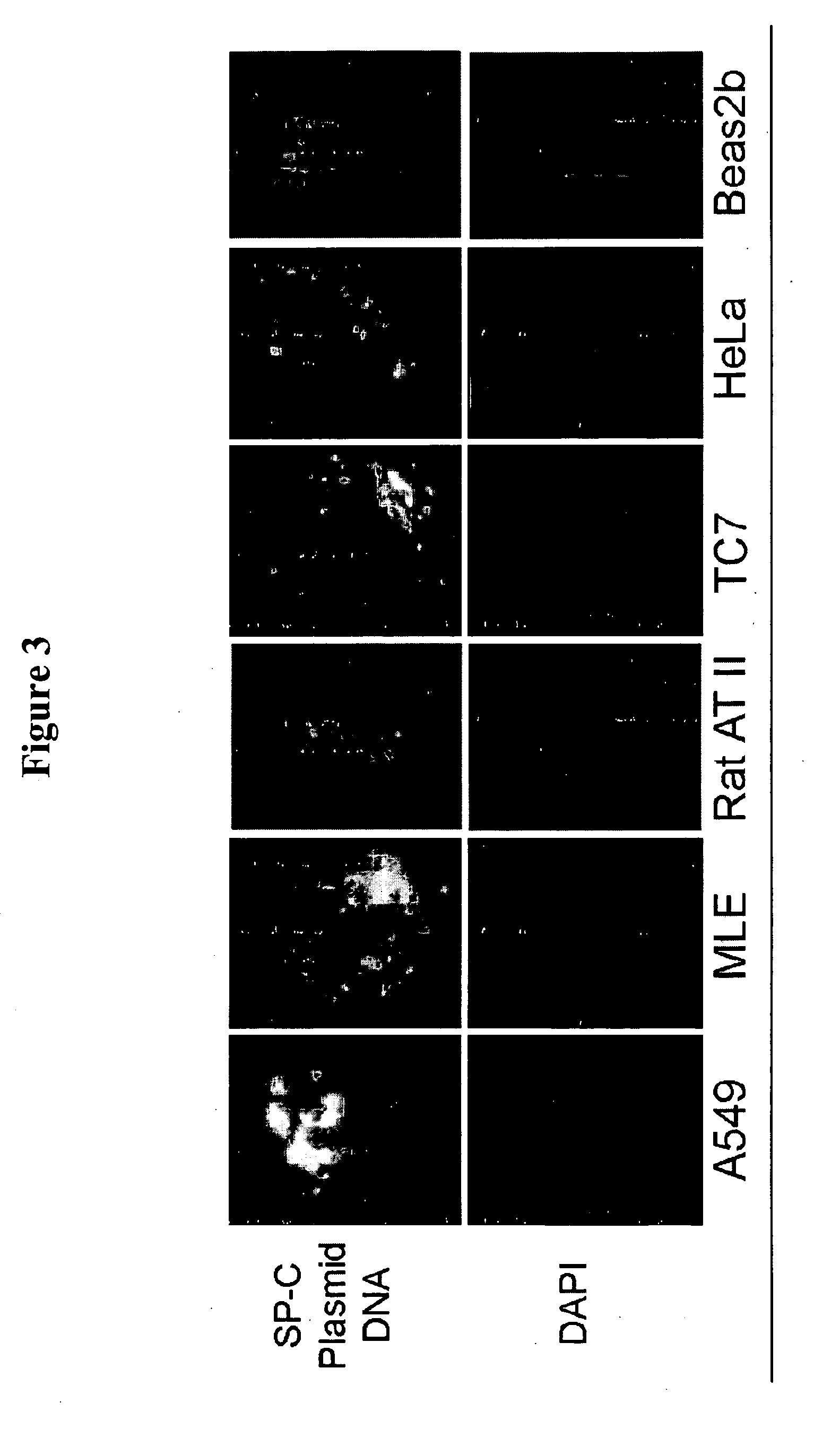Methods and compositions for importing nucleic acids into cell nuclei
a cell nucleus and nucleic acid technology, applied in the field of methods and compositions for importing nucleic acids into cell nuclei, can solve the problems of inefficient gene transfer to non-dividing cells, inability to target rna, and still a long way from practice, so as to inhibit the function of a target rna, the effect of reducing or squeezing gene expression
- Summary
- Abstract
- Description
- Claims
- Application Information
AI Technical Summary
Problems solved by technology
Method used
Image
Examples
example 1
The Human SP-C Promoter (−318 to +46) Mediates Plasmid Nuclear Import in Alveolvar Epithelial Cells
[0089] Experiments conducted during the course of development of the present invention utilized the promoters of several human genes in order to identify signal sequences for specifically targeting lung epithelial cells. These promoters were selected based on their transcription specificity within the targeted lung cell type. The surfactant protein (SP-A, SP-B, SP-C, SP-D) promoters were selected for analysis, as well as the promoter elements of keratins 8 and 18. (Table 1.)
TABLE 1Alveolar Epithelial Genes TestedPromoterGeneFragmentReferenceSP-A1−1000 to +38Kouretas et al, 1993SP-A2−1174 to +1N / ASP-B −730 to +39Bohinski et al, 1993SP-C −318 to +18Glasser et al, 2000SP-D−1675 to +864Rust et al, 1996K-8−1762 to +18N / AK-18−2580 to +750Chow et al, 1997
[0090] These promoter sequences were amplified by PCR using primers designed based on the Genbank sequences of the various promoters and...
example 2
The Human SP-C Promoter (−318 to +46) does not Mediate Plasmid Nuclear Import in Other Cell Types.
[0091] In order to determine whether the nuclear import activity of the human SP-C promoter (−318 to +46) is specific to pulmonary epithelial cells, identical experiments were conducted in other epithelial cell lines from different tissues. The nuclear targeting of the pCRII-TOPO plasmid (Invitrogen Co., Carlsbad, Calif.) containing the SP-C promoter was assayed using the microinjection strategy described above in non-AEC lines. Upon injection of the SP-C containing GFP plasmid into HeLa cells (human epithelial cells from a cervical carcinoma), TC7 cells (African Green Monkey Kidney epithelial cell), ATII cells (primary rat alveolar epithelial type 2 cells), MLE cells (murine lung epithelial type II-derived cells), and Beas-2B (bovine airway epithelial cells), no increased numbers of GFP-expressing cells were observed versus empty vector controls. (FIG. 3.) In all cases, the numbers o...
example 3
The Human SP-C Promoter (−318 to +46)-Mediated Plasmid Nuclear Import is Efficient and Quantitative
[0092] To establish the efficiency of transgene nuclear import and to quantify the results, the SP-C promoter was cloned into a GFP expression plasmid downstream of the CMV promoter-driven GFP reporter gene so as to not affect transcriptional activity. For GFP to be expressed, the plasmid must first enter the nucleus and then be transcribed. Without an appropriate DNA targeting sequence the plasmid cannot enter the nucleus prior to cell division. Thus, only cells with the DNA targeting sequence express GFP at 8 hours. Five hundred to 1000 cells in 5 separate experiments were cytoplasmically microinjected with plasmids containing the SP-C promoter and GFP was assayed 8 hours later. GFP expression was detected in 29.6%±9.8% of viable A549 cells, much higher than control plasmid lacking DNA targeting sequence (1.0%±2.9%). (FIG. 4.) Similar results were seen in murine lung epithelial typ...
PUM
| Property | Measurement | Unit |
|---|---|---|
| wet weight | aaaaa | aaaaa |
| wet weight | aaaaa | aaaaa |
| nucleic acid | aaaaa | aaaaa |
Abstract
Description
Claims
Application Information
 Login to View More
Login to View More - R&D
- Intellectual Property
- Life Sciences
- Materials
- Tech Scout
- Unparalleled Data Quality
- Higher Quality Content
- 60% Fewer Hallucinations
Browse by: Latest US Patents, China's latest patents, Technical Efficacy Thesaurus, Application Domain, Technology Topic, Popular Technical Reports.
© 2025 PatSnap. All rights reserved.Legal|Privacy policy|Modern Slavery Act Transparency Statement|Sitemap|About US| Contact US: help@patsnap.com



